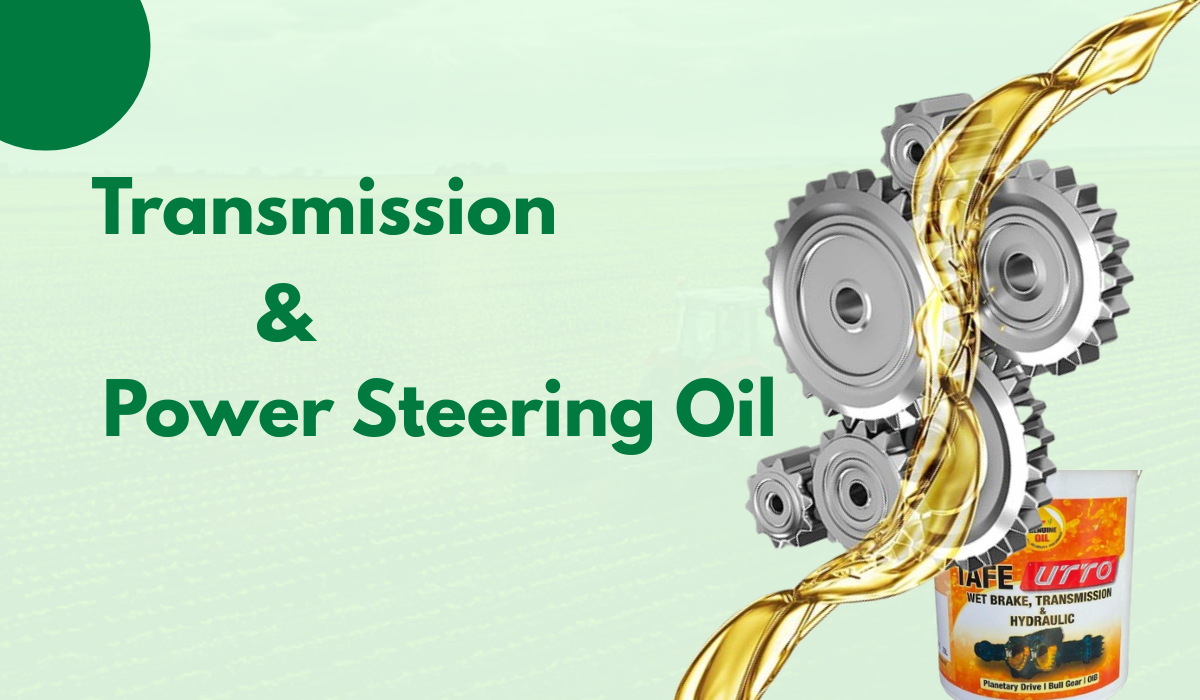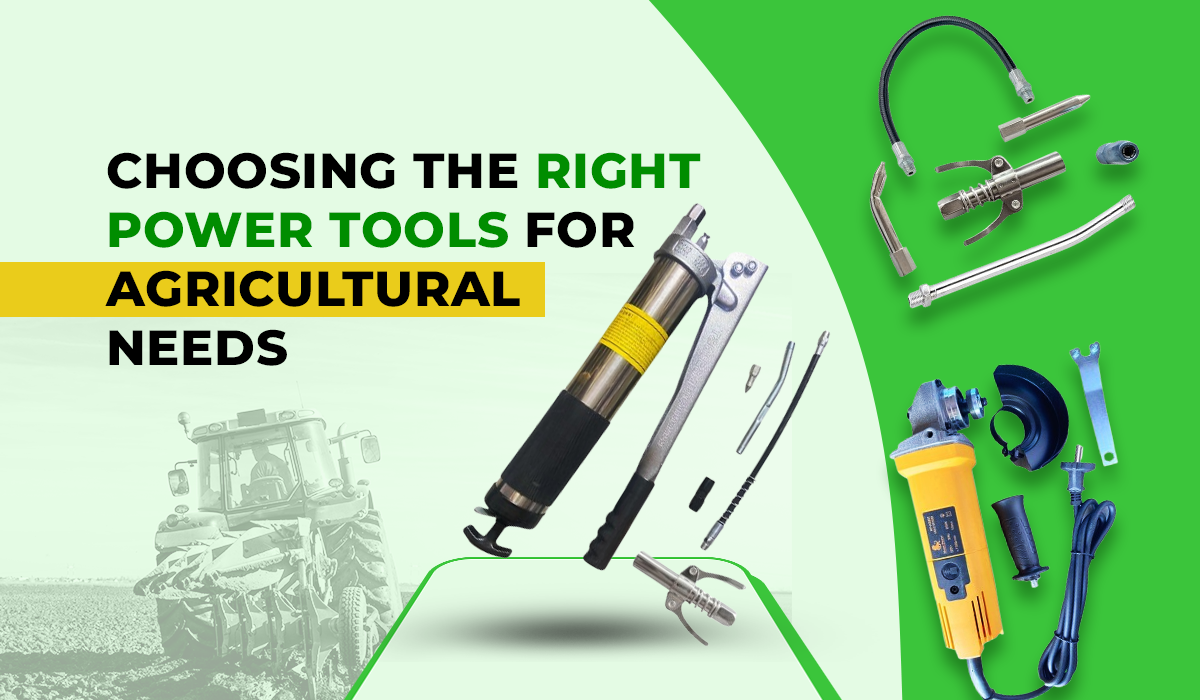Learn how transmission gears shafts boost tractor performance, fuel efficiency, and reliability. Explore premium-quality tractor parts from Gropart.
Transmission And Power Steering Oil – Everything You Need to Know

Keeping your vehicle in top condition is crucial for safety, performance, and longevity. Two of the most critical components in your vehicle’s smooth operation are the transmission system and power steering system. Maintaining them properly means using the right transmission and power steering oil. This guide will explain the types, benefits, maintenance tips, common issues, and everything you need to know to keep your vehicle running smoothly.
What is Transmission And Power Steering Oil?
Transmission oil lubricates the moving parts of your vehicle’s transmission system, reducing friction, preventing wear, and helping the gears shift smoothly.
Power steering fluid is a hydraulic fluid that enables easy steering by transferring force from the steering wheel to the wheels. Without proper fluid, steering becomes stiff, noisy, and less responsive.
Using the correct oil is essential to maintain performance and avoid costly repairs. Using the wrong type can damage the system, reduce efficiency, and even void warranties.
Types of Transmission And Power Steering Oil
Transmission Oil Types
Automatic Transmission Fluid (ATF)
Used in automatic transmission vehicles.
Provides lubrication, cooling, and hydraulic pressure for smooth gear shifts.
Common specifications include Dexron, Mercon, and Toyota Type T-IV.
Manual Transmission Oil
Formulated for manual gearboxes.
Ensures smooth gear engagement and reduces wear on gears and synchronizers.
Synthetic vs Mineral Transmission Oil
Synthetic: Longer-lasting, resistant to high temperatures, and maintains viscosity.
Mineral-based: Budget-friendly, commonly used in older or light-duty vehicles.
Power Steering Fluid Types
Synthetic Fluids
Better temperature stability, longer lifespan, reduced oxidation.
Mineral-based Fluids
Budget-friendly, widely available, suitable for older vehicles.
Choosing the correct type depends on your vehicle model, manufacturer recommendations, and usage conditions. Always refer to your owner’s manual.
Benefits of Using the Right Transmission And Power Steering Oil
Smooth Gear Shifts – Prevents jerky or stiff gear changes in both manual and automatic transmissions.
Extended Vehicle Lifespan – Protects internal components from wear and corrosion.
Enhanced Steering Control – Quality power steering oil ensures effortless and precise steering.
Prevents Overheating – Reduces friction and dissipates heat in both systems.
Reduced Maintenance Costs – Regular use of correct fluids minimizes the need for repairs.
Better Fuel Efficiency – Smooth operation reduces energy loss, indirectly improving fuel economy.
Maintenance Guide: How to Check and Replace Fluids
Checking Transmission Oil
Warm up your engine.
Park the vehicle on level ground.
Pull out the transmission dipstick (automatic vehicles).
Check the fluid level and condition – it should be clear or slightly pink, not dark or burnt.
Top-up if necessary, following manufacturer recommendations.
Checking Power Steering Fluid
Locate the power steering reservoir under the hood.
Remove the cap and check the fluid level.
Inspect for color and consistency – fluid should be clear or light amber.
Add fluid if levels are low, using the correct type.
Replacing Fluids
Transmission and power steering fluids should generally be replaced every 30,000–60,000 miles for transmission and every 50,000 miles for power steering.
Flushing old fluid completely before refilling ensures system cleanliness.
Dispose of old fluids safely – never pour them into drains or soil.
Common Problems Related to Transmission And Power Steering Oil
Gear Slippage or Difficulty Shifting – Indicates low or contaminated transmission fluid.
Stiff Steering or Noisy Operation – Power steering fluid may be low or degraded.
Fluid Leaks – Visible puddles under the vehicle suggest a leak in either system.
Overheating – Dark or burnt fluid reduces lubrication efficiency and causes friction.
Troubleshooting Table
| Symptom | Possible Cause | Recommended Action |
|---|---|---|
| Stiff steering | Low or old power steering fluid | Check level, top-up or replace |
| Gear slipping | Low or degraded transmission oil | Inspect fluid, replace if necessary |
| Whining noises | Contaminated fluid | Flush system and refill with correct oil |
| Leaks | Damaged seals or hoses | Repair seals, refill fluid |
Environmental & Safety Considerations
Always wear gloves when handling transmission or power steering oil.
Avoid spilling fluids on the ground; they are toxic and harmful to the environment.
Recycle old fluids at authorized collection centers.
Never mix synthetic and mineral-based oils unless specified by the manufacturer.
Conclusion
Proper maintenance of your transmission and power steering oil is essential for vehicle safety, performance, and longevity. Regular inspections, timely replacement, and using the correct type of oil help prevent expensive repairs, improve steering control, and ensure smooth gear operation. By understanding the types, benefits, maintenance tips, and common issues, you can make informed decisions to keep your vehicle running at its best.
If you’re looking for reliable automotive and agricultural spare parts or quality transmission and power steering oils, Gropart is your trusted partner.
FAQs
1. Can I use the same oil for both transmission and power steering?
No. Transmission oil and power steering fluid are formulated differently. Using the wrong type can damage your vehicle.
2. How do I check the level of transmission and power steering oil?
Use dipsticks for transmission oil and check the power steering reservoir. Always check when the engine is warm and vehicle is on level ground.
3. Can low power steering fluid affect vehicle safety?
Yes. Low fluid makes steering stiff and unpredictable, increasing accident risk.
4. Can I mix synthetic and mineral-based fluids?
Mixing is not recommended, as it reduces lubrication efficiency and can damage components. Always use the type specified in your vehicle manual.
5. How often should I replace transmission and power steering oil?
Transmission oil: typically every 30,000–60,000 miles. Power steering fluid: around every 50,000 miles. Always follow your vehicle manufacturer’s guidelines.
 English
English

-1.png)


